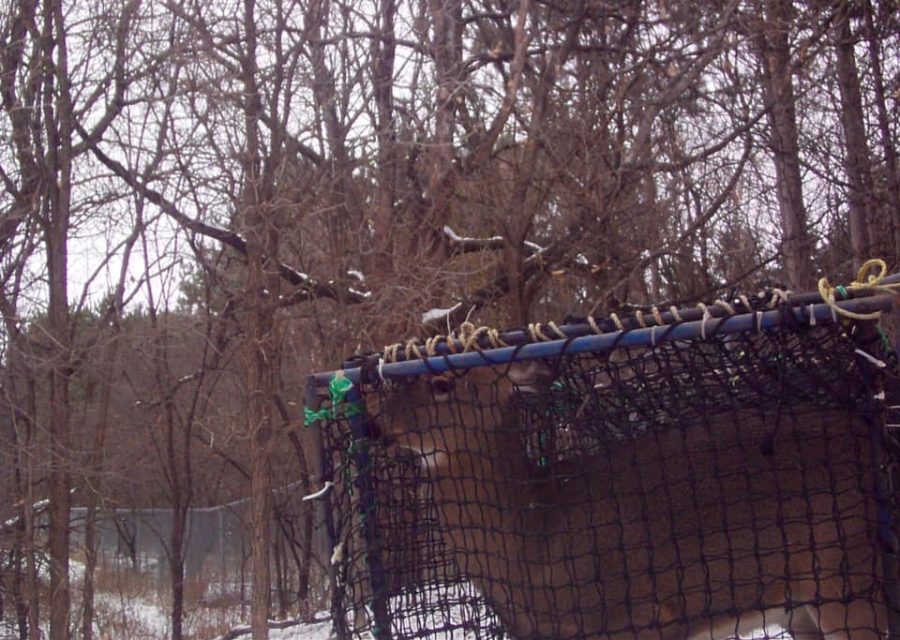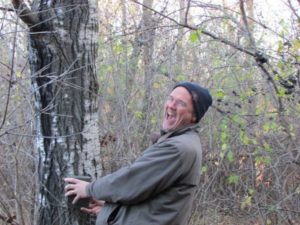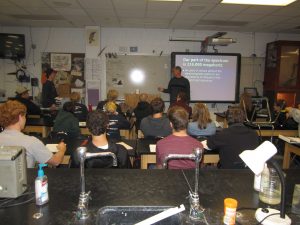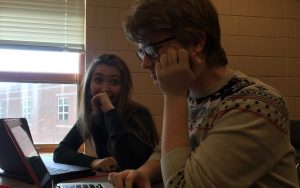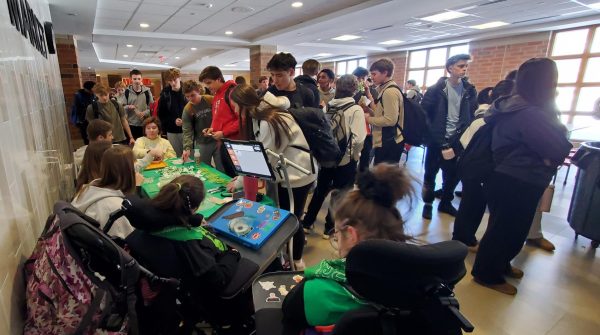Weaver’s classes get hands-on experience with deer
Photo submitted by Andrew Weaver
The doe waits in the trap on the morning of Dec. 4, 2018, just an hour prior to the commencement of the experiment. The deer was lured into the trap using corn as bait.
On Dec. 4, science teacher Andrew Weaver’s Field Biology and AP Biology classes caught a deer in the ELC. Once the deer was anesthetized and unconscious, students proceeded to gather information on the two-year-old doe using blood samples. They also had to regulate the deer’s body temperature, as anesthesia can have an effect on the deer being able to regulate it by itself.
The week prior to the capturing of the deer, students caught a smaller doe that had escaped because, during the process of collapsing the trap, the deer broke through a piece of the net. After the malfunction, they tweaked the trap a bit and it was successful in capturing the deer the following week.
Along with gathering information through hands-on experiments, the students also strapped a radio collar to the deer, which is programmed to send data back to a receiver where students can keep tabs on the deer. With better technology than previous years, this collar can provide more information on the deer’s movement patterns. Not only is the current collar more capable, but the battery duration also has the potential to last for the next four years.
“Technologically, we can reprogram the collar to send us less information and therefore have the batteries last longer, or we can program the collar to send a whole bunch of information and have the collar life last longer,” Weaver said.
To assist Weaver in facilitating the capturing of the deer, he was helped by Peggy Callahan and some of her interns from the Wildlife Science Center. Not only did she facilitate with Weaver, but she is also a professional anesthesiologist with wildlife and dealt with all of the anesthesia. After they secured the collar, Callahan then gave the deer a drug that would reverse the effects of the anesthesia and allow the deer to regain consciousness.
“The interns with Peggy Callahan, along with Jack Flaherty, went to go and actually get the deer out of the trap and give her anesthesia to make her go to sleep. After they did that, then we all walked back to the trap and the deer was out of the cage,” senior Bethany Olson said.
It was a process in and of itself for Weaver to even be able to do this with the state’s approval. It started many years ago when Weaver was in graduate school learning and mastering the skill of radio telemetry. This lead to him writing a grant for radio equipment such as antennas, receivers, and collars that he then used on raccoons, squirrels, and other smaller animals. With his skills in trapping smaller animals developed, Weaver then contemplated trapping a deer. The state loaned him a trap, he then formed a relationship with Callahan and was permitted to trap deer in the ELC.
“You have to have someone that is certified and has a license in order to inject the deer with anesthesia and Mr. Weaver had to have a license in order to be able to track the deer,” senior Charlie Hazelroth explained.
The tests performed on the deer, as well as monitoring and tracking its movement with the radio collar will provide useful information for current and future students, as well as local hunters who helped fund the radio equipment. They will now be informed and have a greater understanding of local deer movement patterns and behavior.
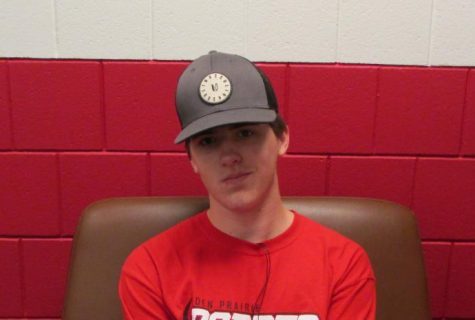
Hi my name is AJ Gunderson and I am a junior Podcast Reporter. In my free time I enjoy making music and videos, skiing, mountain biking, and playing ultimate...


